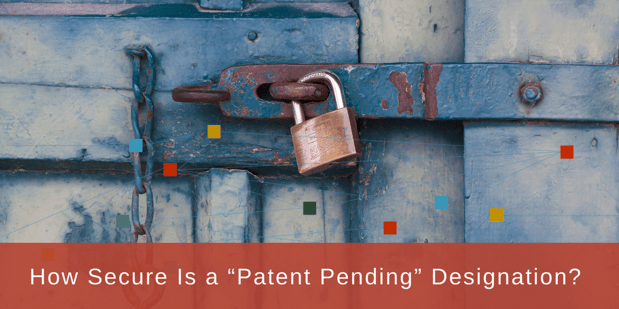 Anyone who’s watched Shark Tank has heard the hopeful inventors and entrepreneurs claim “patent pending.” The investors nod gravely, giving the impression that they’re impressed. As someone planning to file for a patent in the future, you may believe that completed application gives you all the power in the world.
Anyone who’s watched Shark Tank has heard the hopeful inventors and entrepreneurs claim “patent pending.” The investors nod gravely, giving the impression that they’re impressed. As someone planning to file for a patent in the future, you may believe that completed application gives you all the power in the world.
But does it? How secure are you when you have a patent pending?
How Patent Pending Status Helps
For those wondering if someone could steal their innovation, rest assured the patent pending designation does provide some protection. If you have filled out and submitted the application, and someone else begins using your innovation to make money, you do have legal rights.
While you do still have to wait until the patent is fully granted, the damages begin accruing eighteen months after the patent is filed. So, even though the patent could take up to three years to be valid, you’ll still be covered. If the offending company is proven to have acted willfully in their theft of your intellectual property, those damages will be treble.
In the meantime, you can file an injunction to stop the company from selling anymore of the infringing products. Perhaps even more damaging than the financial outlay if they’re proven to have infringed upon your intellectual property is the public relations disaster the company will face as they head into court.
For these reasons, most companies won’t attempt to infringe upon anyone’s intellectual property. If you’ve filed a quality patent, you have nothing to worry about.
How Patent Pending Status Can Fail You
While your patent is pending, you are protected. What happens if your patent filing is rejected, though? There are quite a few common reasons that patent applications can be rejected, so it’s important to ensure you’ve covered all your bases.
A lack of novelty is one of the major reasons a patent could be rejected. The fewer pieces of prior art you reference, the more novel your invention will be. Your innovation could be found to be too close to something else already patented. If that’s found to be true, your patent pending status ceases to protect you.
Obviousness is another reason that patents can be rejected. Where lack of novelty covers one particular invention, a rejection for being obvious covers inventions that pull from several pieces of prior art to create something that’s too obvious to be deemed innovative. Perhaps one example might be a cup as prior art, a handle as prior art, and a coffee mug as the patent pending innovation.
The language in the claim can also affect your potential for acceptance. We’ve covered the breadth of patent claims before. Essentially, you must ensure the terms are not too broad. If they are, you may receive the patent, but it may be of little value when you’re forced to defend it. The previous patent holder for podcasts just learned this week how broad language can kill a patent even after it’s been granted.
There are several other reasons that patents may not be granted, even after you wait the full three years or more to learn your fate. Don’t make the mistake of believing your innovations are fully protected until you’ve received that patent from the US Patent and Trademark Office.
Innovation Consulting from IPVision
Our state-of-the-art tools can give you insight into what technology already exists. Wouldn't you love to know now, before getting an ugly surprise later? If you're working to protect your company from infringement, then understanding what competitors are doing is imperative.
This is just one aspect of the consulting services we offer. To learn more, give us a call.



